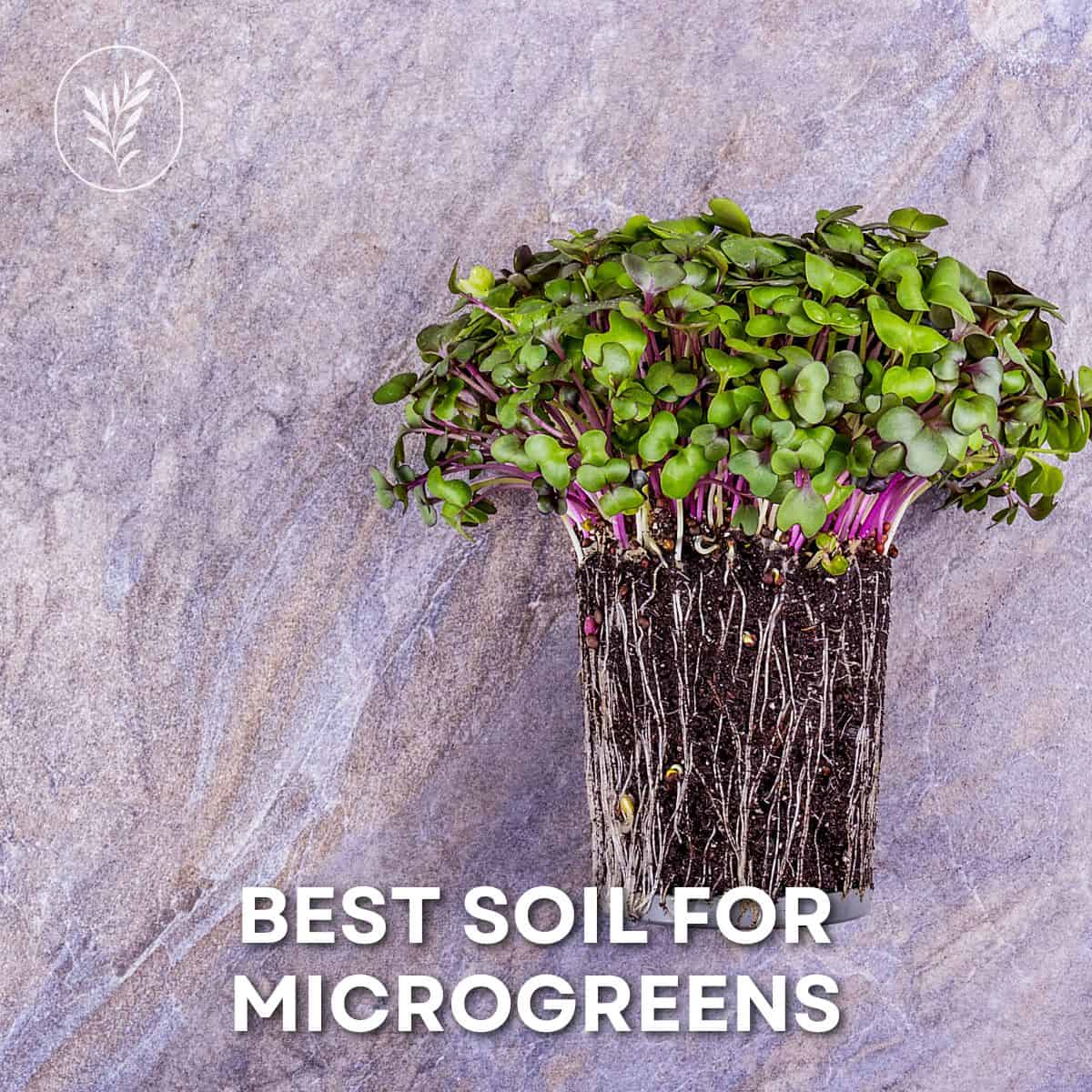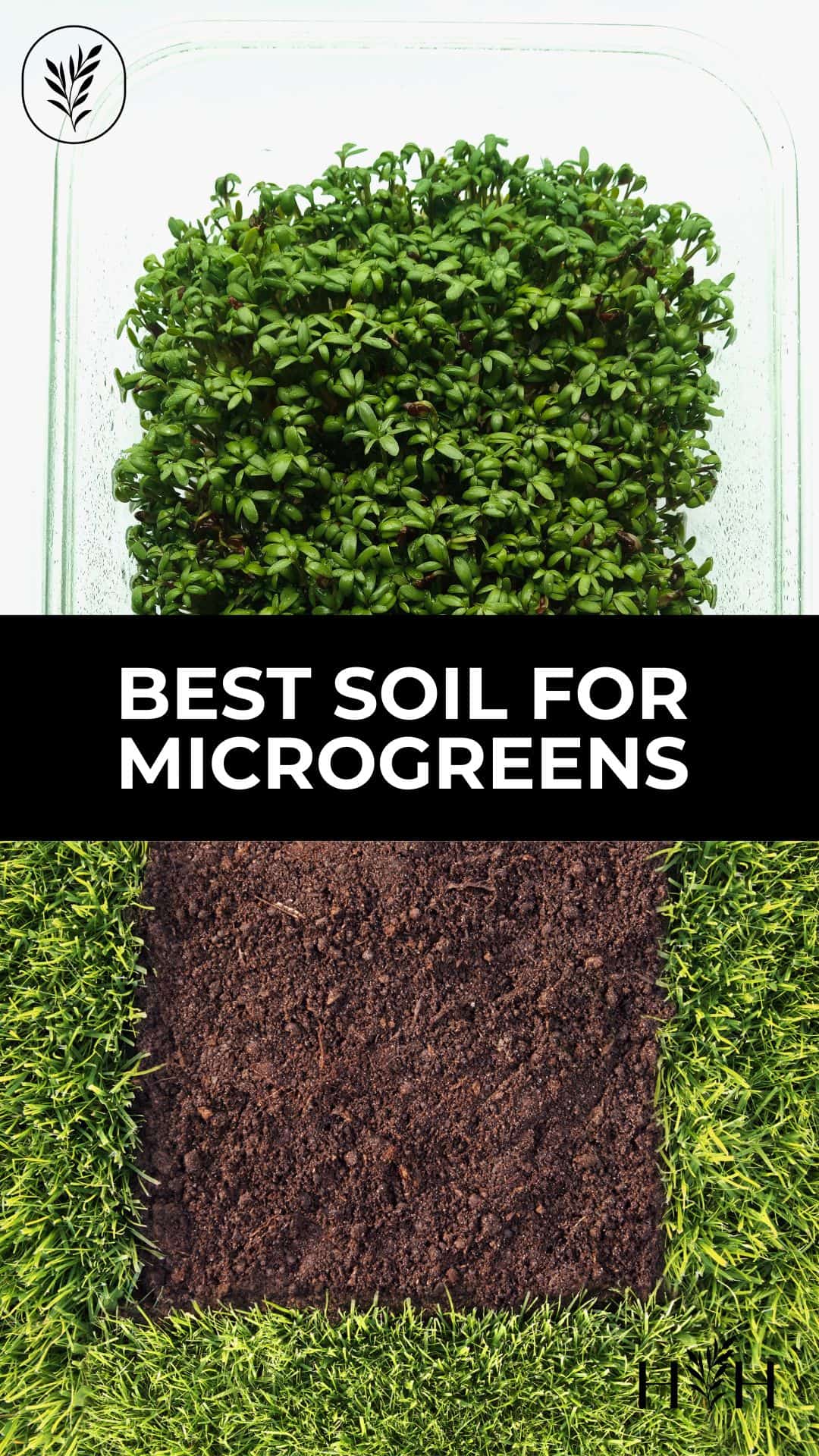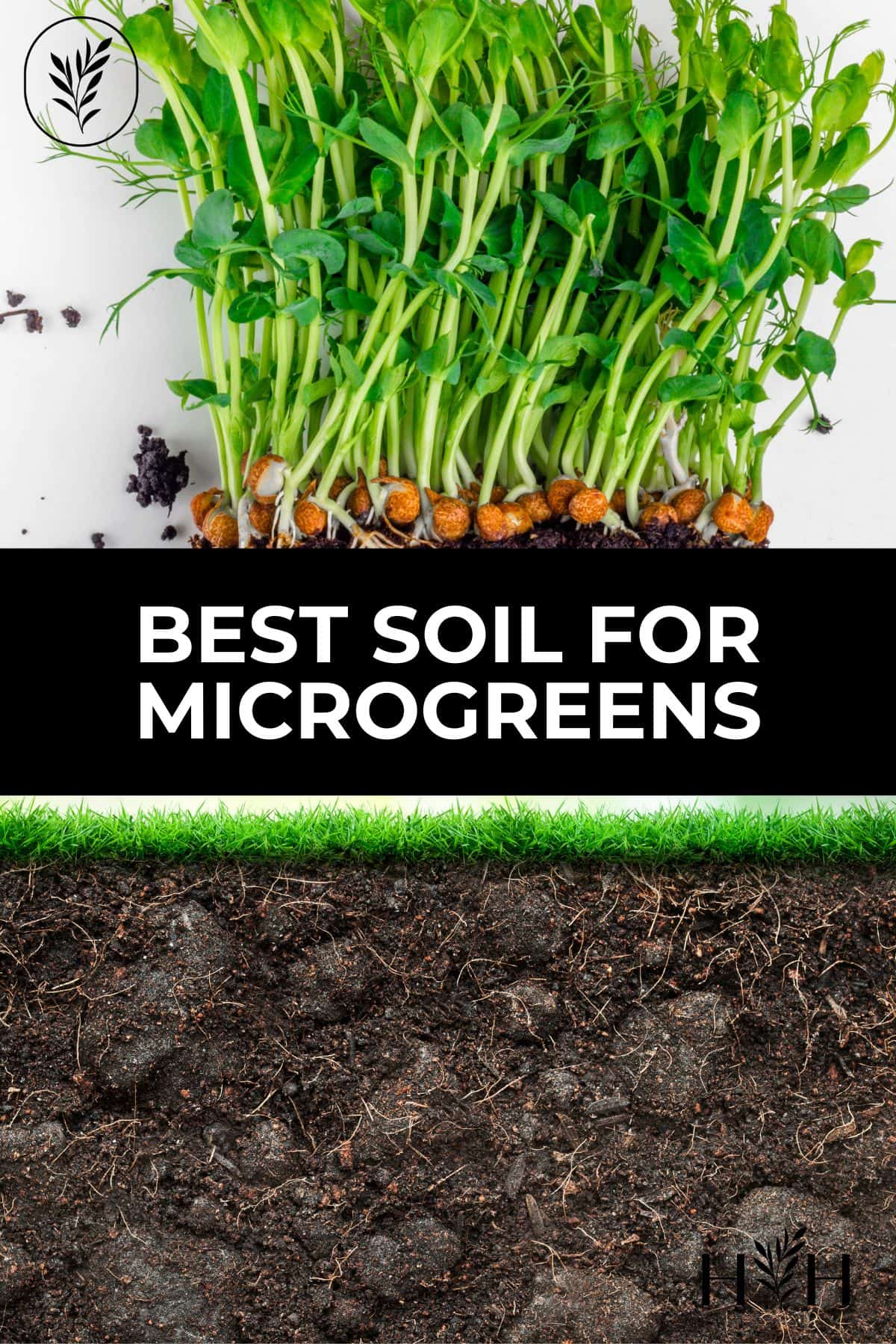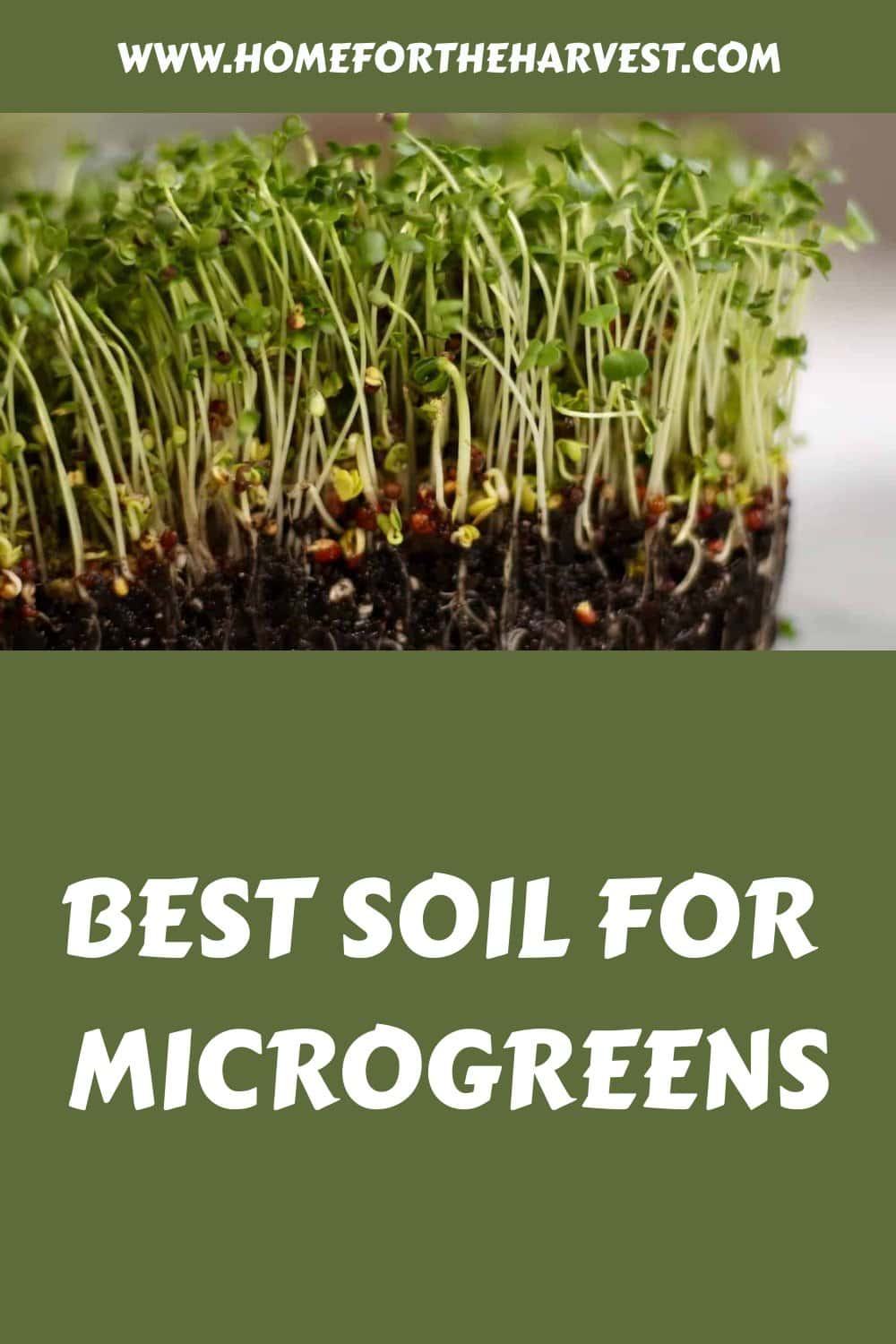Growing great baby salad greens requires a great potting mix! These baby plants are worth the investment of high-quality growing media. Here is a guide to the best soil for microgreens, including pre-mixed options and a DIY recipe.
The best potting soil for microgreens is roughly 80% organic material (peat moss, coconut coir, sterilized compost), mixed with 20% perlite. Here are three of the best pre-mixed soil options for microgreens:
- Burpee Organics Potting Mix
- Espoma Organic Potting Mix
- Jiffy Organic Seed Starting Mix
- Back to the Roots Organic Potting Mix
- Nature’s Care Potting Mix
- Miracle-Gro Performance Organics Potting Mix
Great microgreen growing mixes are safe for organic gardening and have high water retention yet still allow for air pockets in the soil. They have a balanced pH (often with limestone), and will contain a little bit of organic fertilizer. Read on to learn more about the best-growing media for home microgreen gardens and the ingredients that make these potting mixes successful.
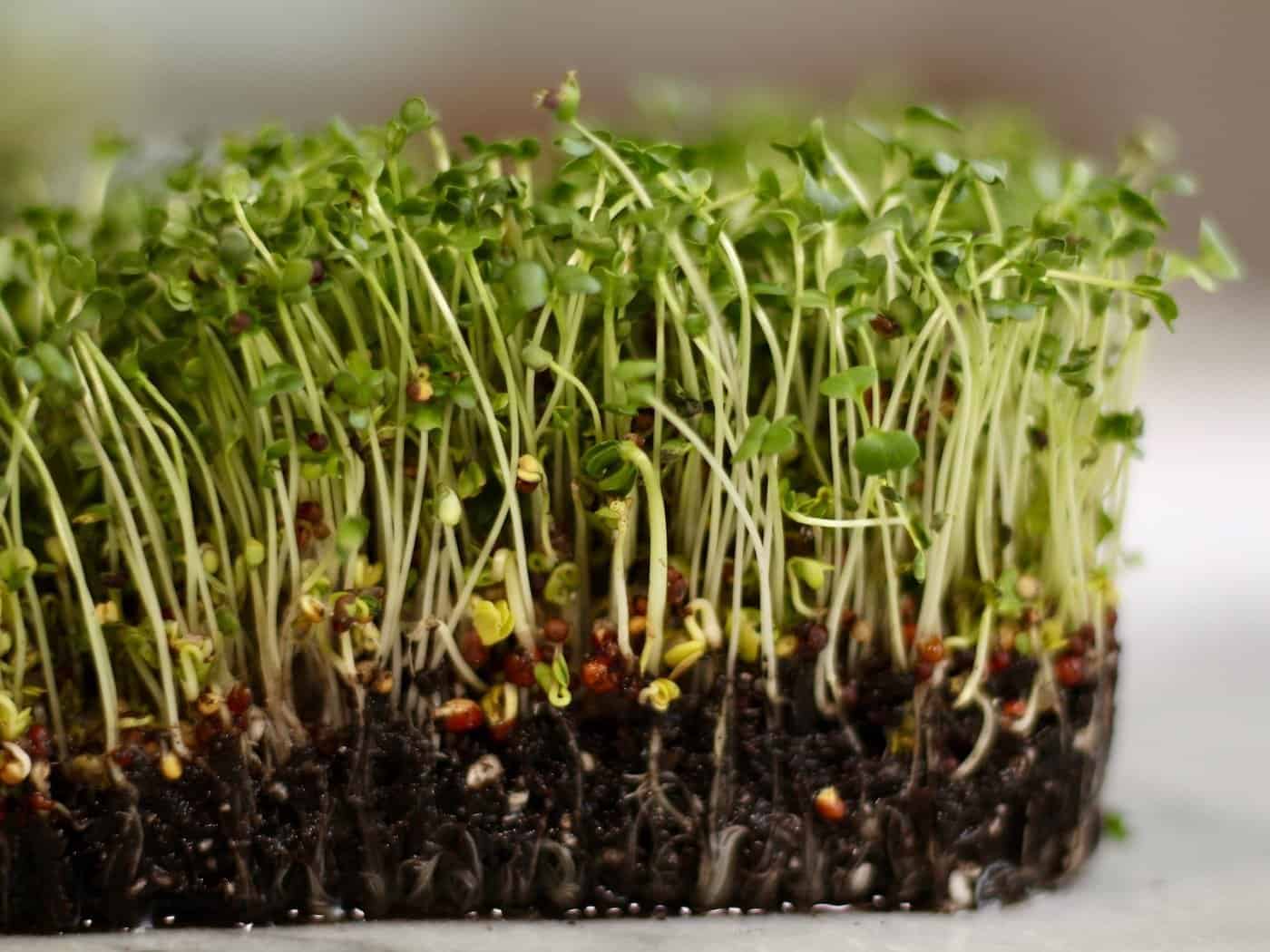
Recommended potting mixes for microgreens
Indoor potting soil is the best choice for growing microgreens at home. It is also called soil-less mix (because it doesn’t contain outdoor mineral soil). The best mixes are sterile, light, and easy to work with. Look for a mix that is sustainably sourced and safe for organic use.
Here are three of the best potting soil options for growing microgreens:
1. Burpee Organic Premium Potting Mix
Burpee Organic Premium Potting Mix is an excellent OMRI-Listed coconut-husk based mix. It uses compost for added bulk instead of peat, and contains the necessary amount of perlite to help your microgreens thrive.
“Contains coconut fiber, compost, perlite and organic fertilizer composed of fully composted turkey litter, hydrolyzed feather meal and sulfate of potash”
Material Safety Data Sheet, Section II
Burpee’s potting mix is OMRI-Listed as allowed in certified organic food production. It’s also a great choice if you’d like to avoid peat-based soil for growing your microgreens.
2. Espoma Organic Seed Starter Mix
Espoma’s Organic Seed Starter Mix is a nice blend of peat with perlite. It retains enough moisture to sprout and grow the microgreen seeds (without holding so much water that the tiny roots can’t access air).
“This product is formulated from 80-90% Canadian sphagnum peat moss, perlite, limestone to adjust pH, and yucca extract.”
Espoma Organic
Espoma’s seed starter includes beneficial mycorrhizal fungi to promote root growth. It’s got all the good stuff (without anything scary added). This is a great choice for microgreen gardeners who prefer to use products made with North American sourced peat. Espoma products are not currently listed by OMRI for organic production.
3. Jiffy Organic Seed Starting Mix
Jiffy Organic Seed Starting Mix is a blend of peat moss and coir with vermiculite. It works well as microgreen growing soil.
Mix contains: 60-70% Canadian Sphagnum Peat Moss, Vermiculite, Coir pith and Lime (pH adjuster). Organic and OMRI listed.
Jiffy Natural & Organic Seed Starter Mix
Jiffy’s organic mix is OMRI-Listed and safe for growing organic microgreens.
4. Sun Gro Black Gold Potting Mix
Sun Gro Black Gold Potting Mix is an OMRI-Listed mix of peat moss and compost, plus perlite and organic fertilizer. This soil is essentially an enriched version of the company’s Sunshine Mix #4, which is a very popular peat+perlite bulk-base growing medium for commercial microgreen growers.
“Contains: Canadian Sphagnum Peat Moss, Composted or Aged Bark, Compost, Earthworm Castings, RESiLIENCE®, Horticultural Grade Perlite, Pumice, or Cinders, Organic Grade Fertilizer”
Sun Gro Horticulture
Sun Gro’s Black Gold is OMRI-Listed as allowed in certified organic food production. Sun Gro is also a great choice if you have future hopes of moving towards larger-scale microgreen production, as the company offers bulk soil products that are for growing microgreens at a large scale. Sun-Gro is the brand that was used at the biggest urban microgreens farm that I’ve visited to date.
Here are some other wonderful potting soil options for growing microgreens:
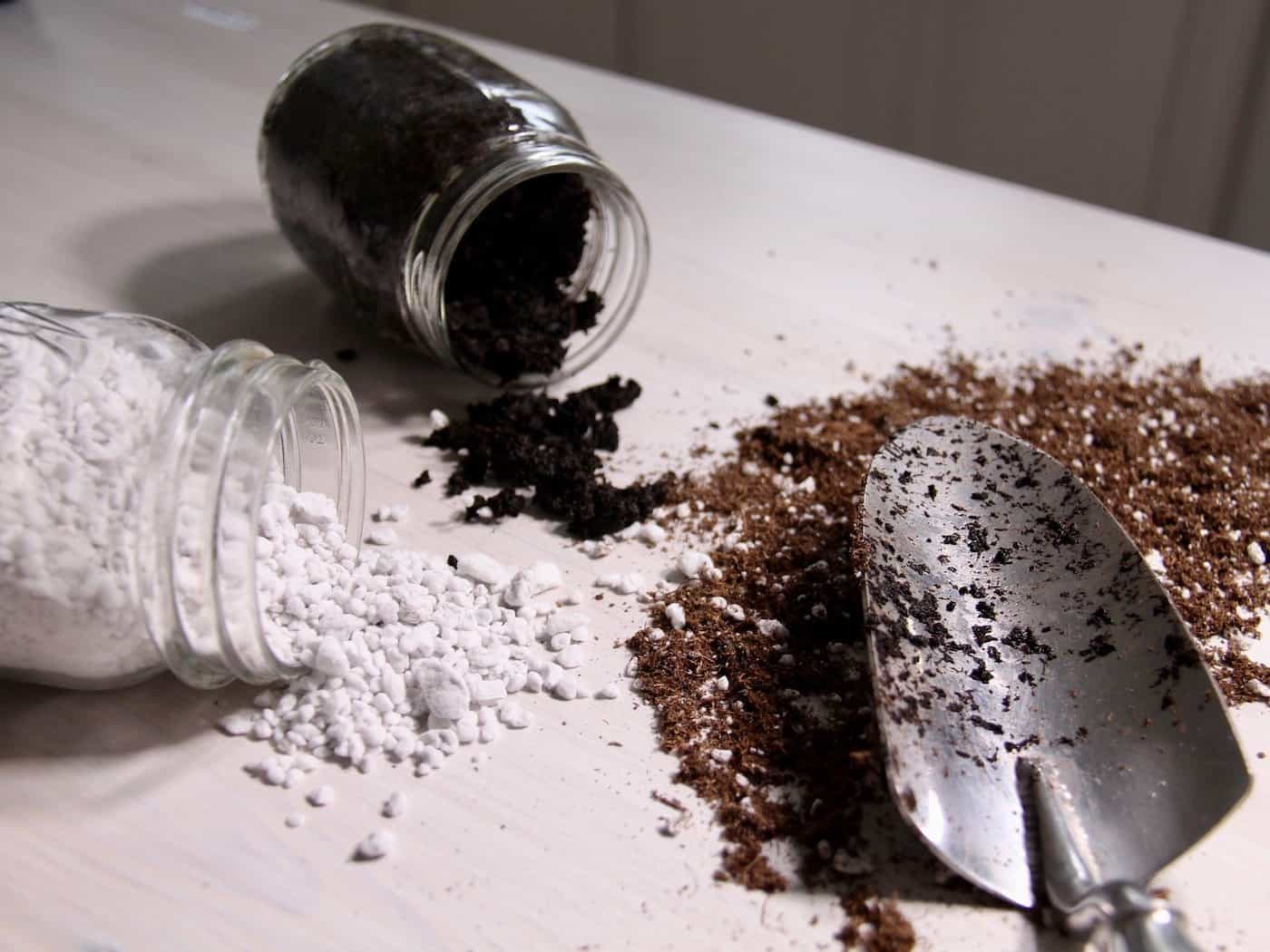
The main ingredients in the microgreen soil mix
The perfect growing media is possible only with the right ingredients. These ingredients work together to balance moisture, oxygen, and nutrients for the roots of microgreens while providing a solid structural base. Ingredients in high-quality microgreen growing mediums are generally coarse-grained and blended to be pH-neutral.
“Potting media, which has a coarser texture than garden soil, is commonly used in container gardens and in trays for sowing seeds. “
Homemade Potting Media, PennState Extension Office
“Common media components used in the greenhouse include peat perlite coir parboiled rice hulls and fine bark. Compared to traditional container nurseries most greenhouses will use sterilized media.”
Growing Media for Container Production in a Greenhouse or Nursery, University of Arkansas, Division of Agriculture, Research & Extension
Peat moss
Peat moss consists of decayed organics mined from peat bogs. It is primarily used because of its high water retention capacity. Peat moss is generally mixed with a wetting agent to aid initial water absorption.
A key advantage of peat moss over compost is that it doesn’t contain any seeds from other plants. Further, due to its water retention properties, it is excellent for keeping the seeds moist as they germinate. Many of the best soil mixes for microgreens are peat-based.
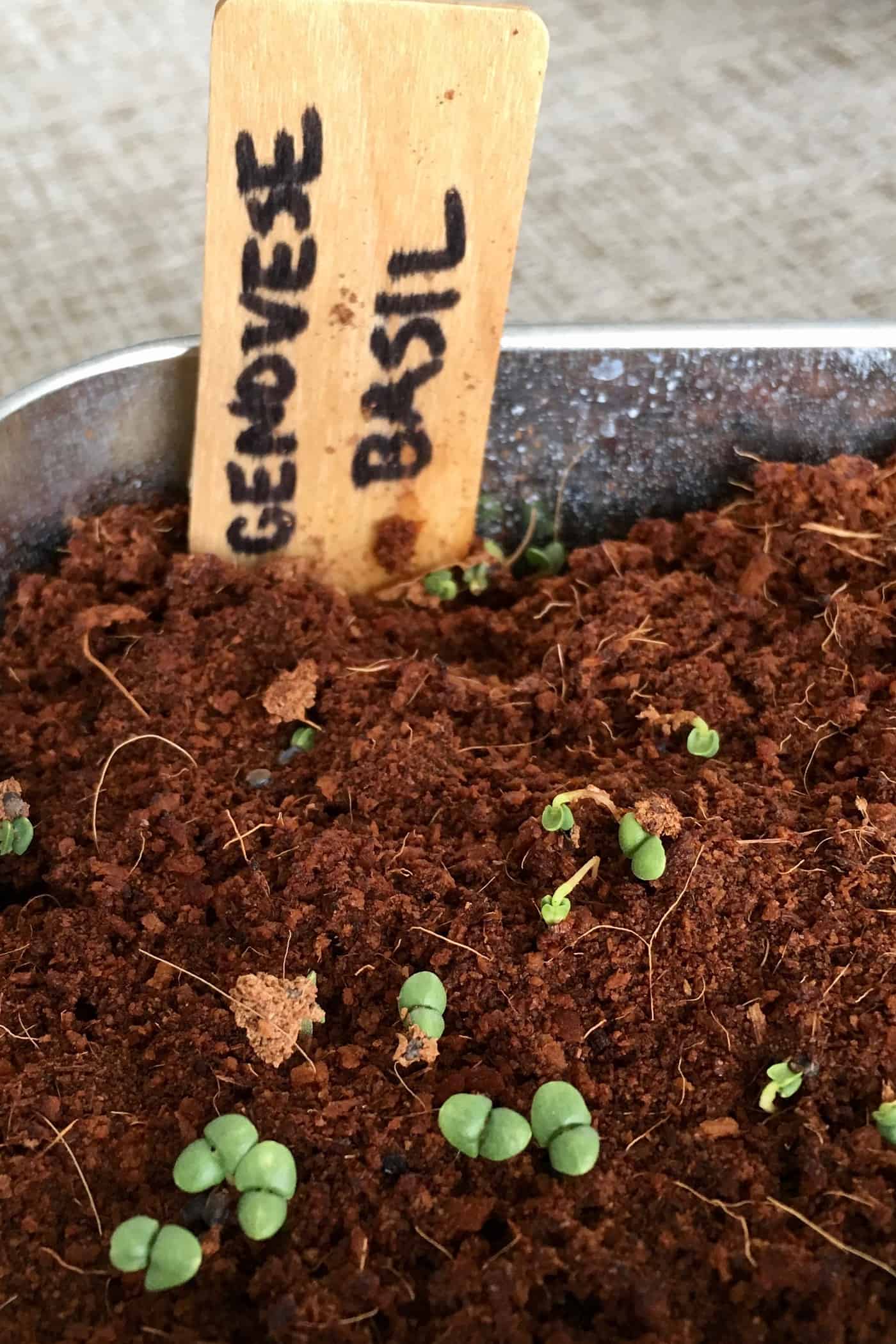
Coconut coir
Coconut coir is a growing medium made from the husk of coconut fruit. Coco coir is used either as an alternative to peat moss or in addition to it. Coconut coir is more fibrous than peat but still has excellent water retention. It has the added benefit of being a byproduct of agriculture rather than a mined substance.
Like peat moss, coconut coir’s biggest plus point is its water-retention capacity. It is also resistant to microbial breakdown and tends to allow for some degree of air supply. Coir is also easier to wet than peat moss. It does, however, sometimes have a tendency to release salts and immobilize the nutrient nitrogen (from the organic fertilizer). While rarely used entirely on its own, coconut coir is becoming more and more common in high-quality microgreen growing soils.
Perlite
Perlite is “volcanic popcorn” made when volcanic rock is heated and expands. It is sterile and chemically inert. Perlite acts as a great additive to bulk organic materials that tend to hold water well, as it facilitates drainage and access to oxygen. All of the best soil mixes for growing microgreens that I’ve used have contained a minimum of 10% perlite.
Here are some of the key characteristics of perlite with respect to growing microgreens:
“Lightweight; absorbs two to six times its weight in water, but has little water holding capacity; neutral pH; chemically inert; produces an irritating fine dust”
Excerpt summarizing characteristics of perlite as a growing medium, Mineral Nutrition of Plants: Principles and Perspectives, by Emanuel Epstein and Arnold J. Bloom
Proper root aeration is crucial for the healthy growth of your microgreens. Even though using peat moss as a base for your growing media may provide some aeration on its own, adding perlite ensures water in the growing container is never more than the amount that your plants need. Increased airflow from perlite makes the mix breathable for your plants. It’s nice to buy potting soil with the perlite mixed in already (note the dust warning in the quote above.)
Limestone
Powdered limestone is added to the best microgreen soil mixes to balance the chemical pH of the media. Peat moss and coconut coir can be highly acidic and require buffering with an alkaline substance.
Organic fertilizer
Organic fertilizers in microgreen growing media are typically sourced from compost, worm castings, or extracts from plants/animals/rocks. It is possible to grow microgreens without organic fertilizer. You’ll just be depending only on the nutrients contained in the seed (in an otherwise inert growing medium). A gentle organic fertilizer will provide nutrients for longer-lived microgreens without the environmental cost of synthetic chemical fertilizer.
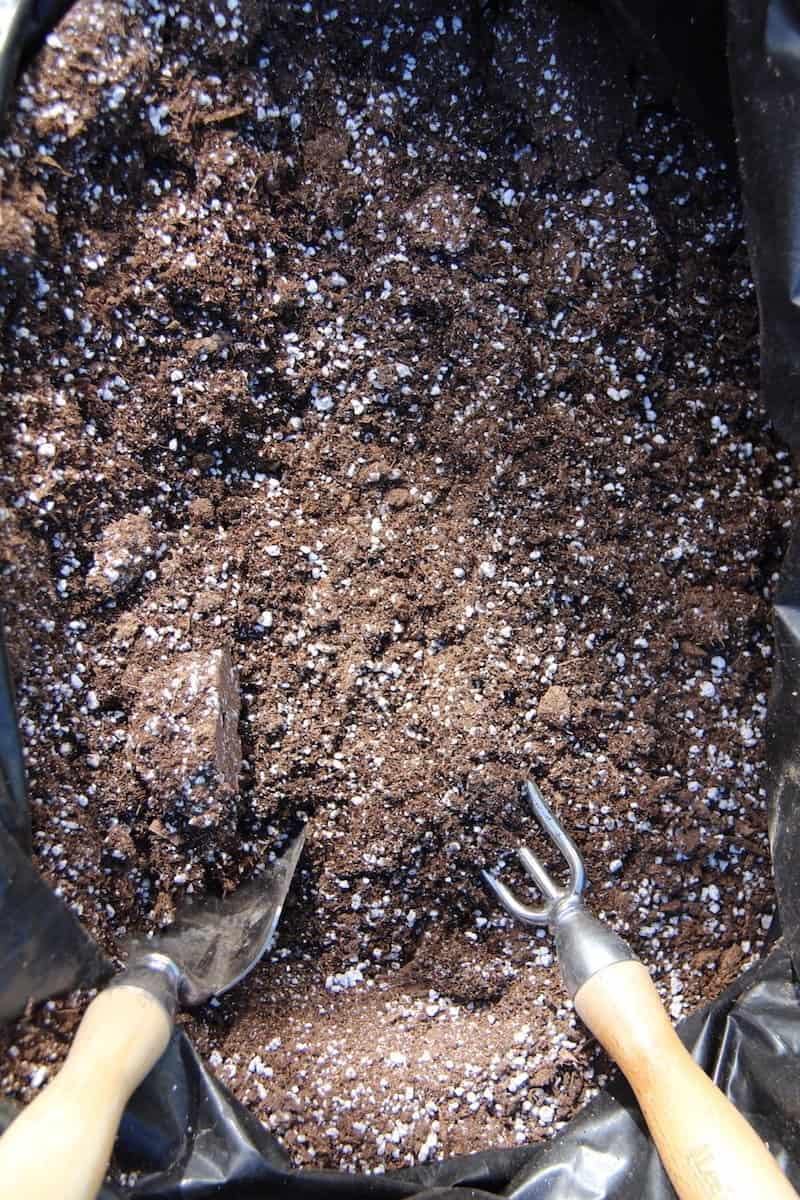
DIY soil mix recipe for growing microgreens
If you wish to mix the growing media yourself, ensure it contains somewhere in the neighborhood of 80 percent of peat moss and/or coconut coir. Use perlite for the remaining 20 percent of the mix. If adding compost, use something that is sterilized (or accept that it may contain unwanted pathogens).
Mix and match your ingredients to find the perfect fit for your unique needs. The whole exercise is not only beneficial for your microgreens but is also a way to learn more about gardening. As with pre-mixed products, choose ingredients that are OMRI-Listed and sourced sustainably.


